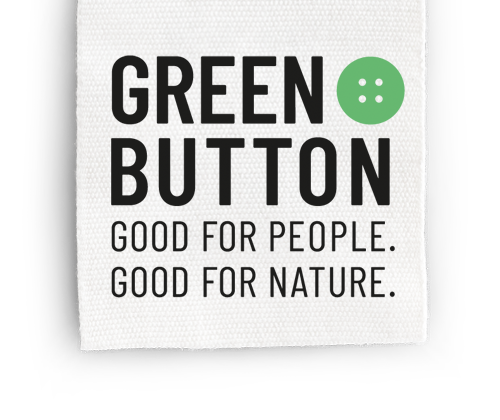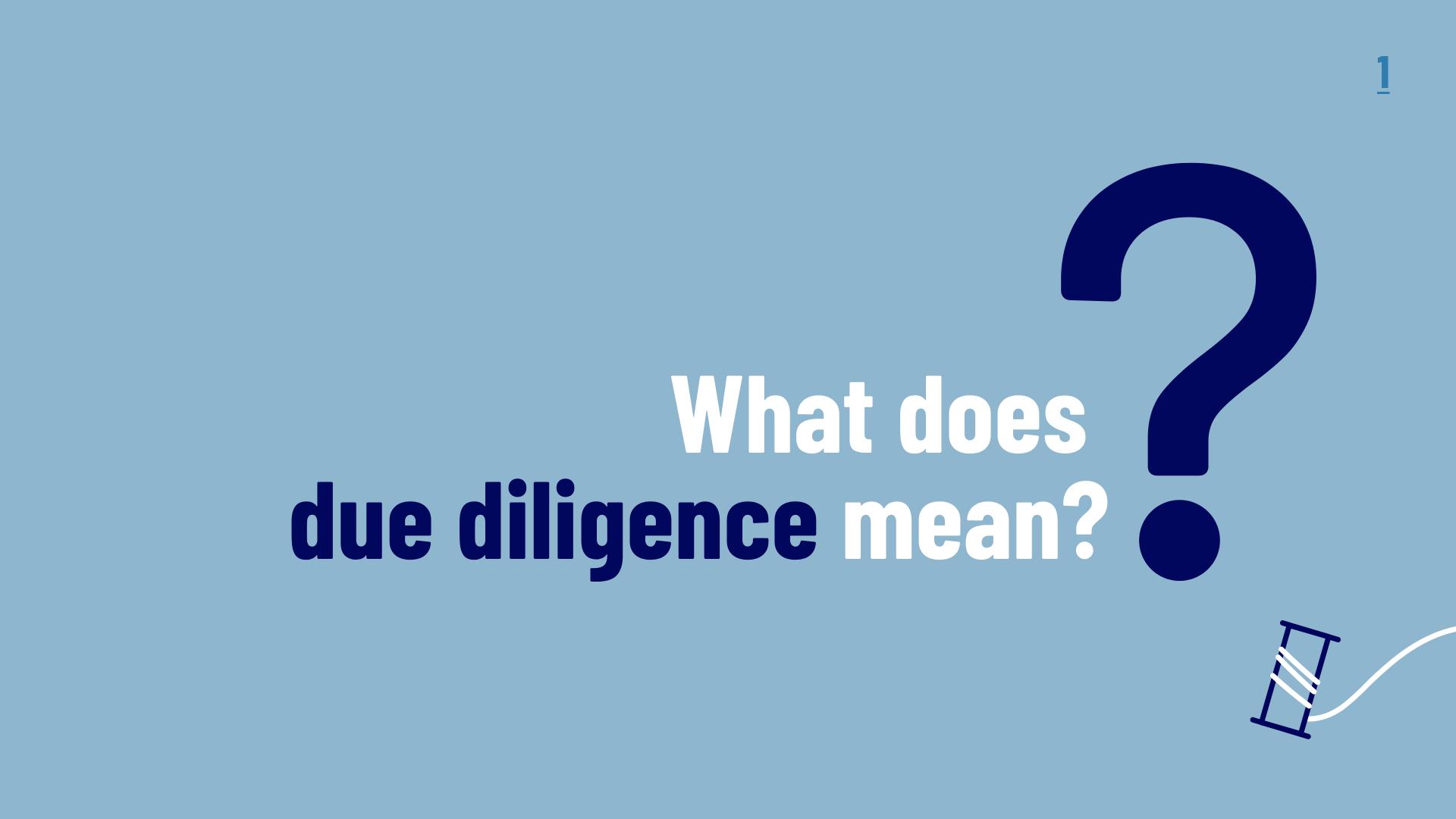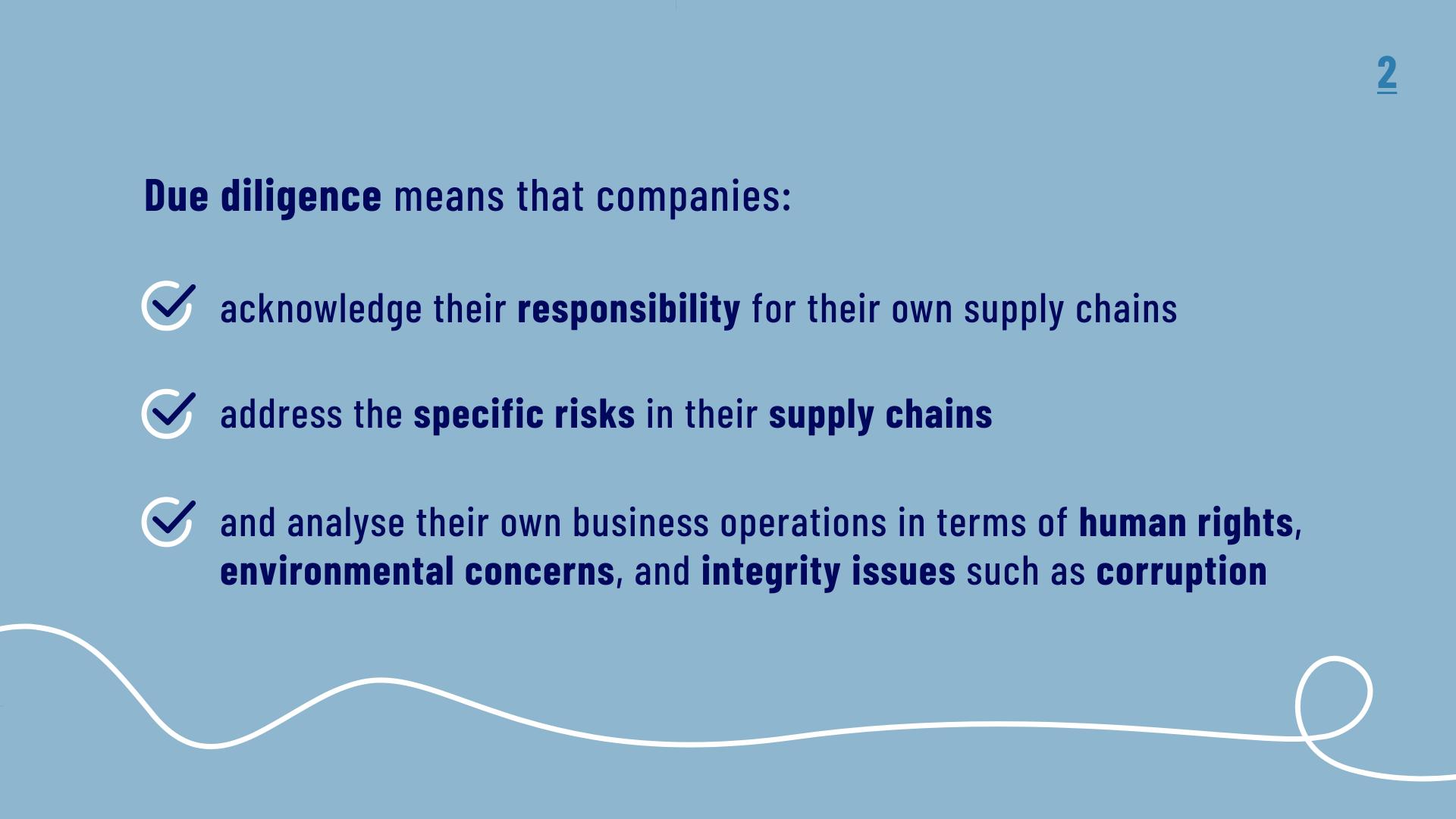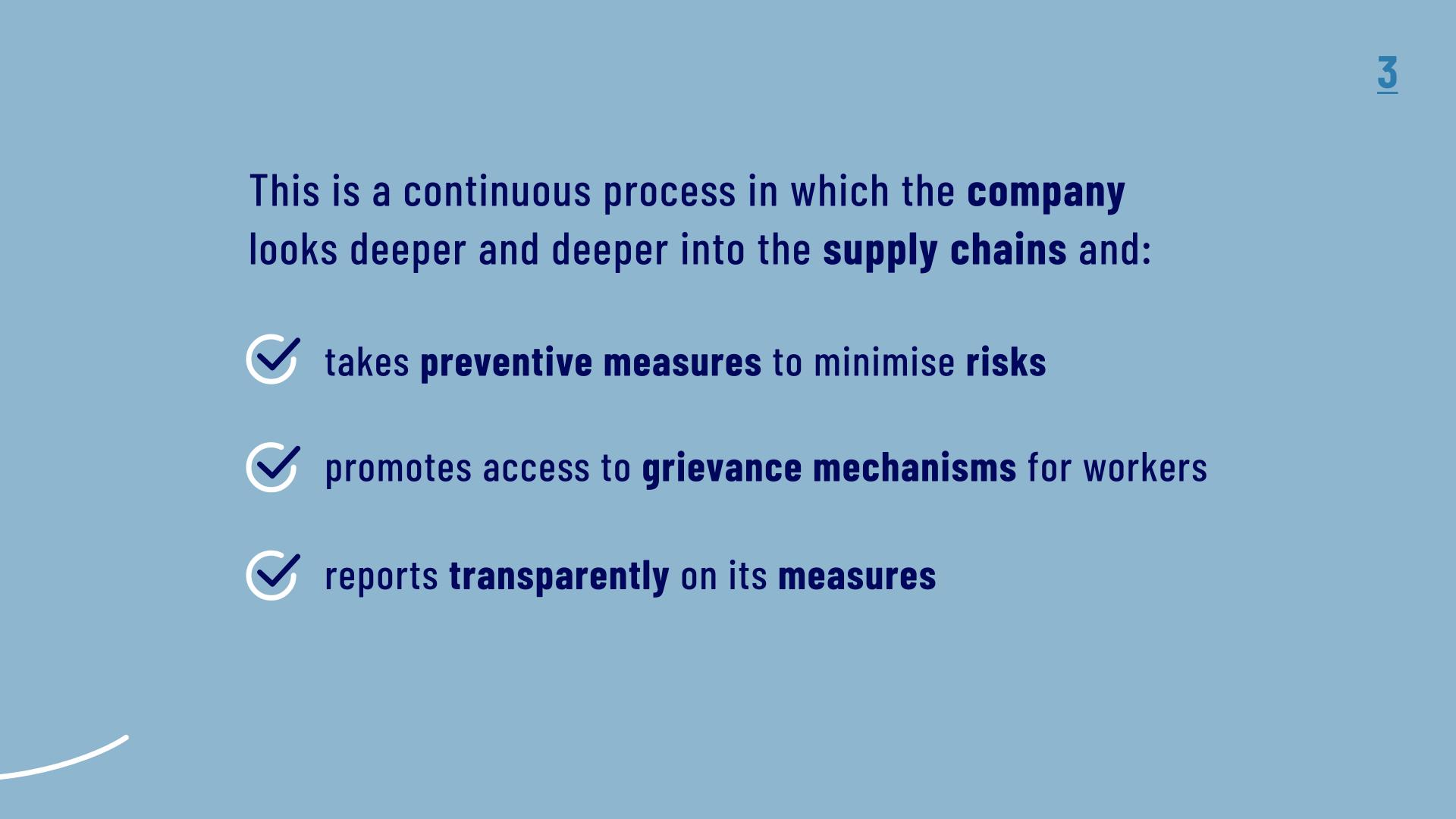Due diligence processes
The company’s responsibility along the entire supply chain.
Due diligence processes
For the Green Button, companies must demonstrably take responsibility for their supply chains. Independent certification bodies evaluate whether the company meets the requirements for the Green Button's due diligence processes. This is a novelty: the government-run Green Button certification label has shown that corporate due diligence processes can be audited.
Taking responsibility
A garment goes through many different production steps before it actually ends up in our wardrobe. Starting with raw material extraction and fibre processing, through spinning and weaving, bleaching and dyeing, to cutting and sewing. All this takes place in very different production facilities around the world - often in countries of the Global South. An estimated 75 million people are involved in the production of textiles, the majority of whom are women. To ensure that their rights and the protection of the environment are respected in the production of textiles, companies must take responsibility and a closer look.
Of course, textile companies know their direct suppliers. But these direct suppliers, for example, buy fabrics from other suppliers, who in turn work together with other suppliers or contract so-called subcontractors. This non-transparent supply chain network with a multitude of companies involved and the often-missing direct business relationships are one reason why textile companies usually do not know exactly under which social and ecological conditions their products are actually produced. With the Green Button, companies must therefore demonstrate the ways in which they close gaps in their knowledge of their supply chains.
Taking responsibility for people and the environment in the production process therefore requires a detailed examination of one's own supply chain. The concept of corporate due diligence starts there and forms the basis for the company-related requirements.
What does that mean specifically?
In order to fulfil their corporate due diligence obligations, companies must acknowledge responsibility for their supply chains, address the specific risks in their supply chains, and analyse the adverse impacts of their own business activities on human rights, environmental concerns, and integrity issues such as corruption.
They must take effective measures to prevent risks that result from their business model or are common in the countries where their products are produced. Companies must also be transparent about the risks and how they are being addressed. They must actively advance workers’ ability to express grievances and support them if their rights are violated.
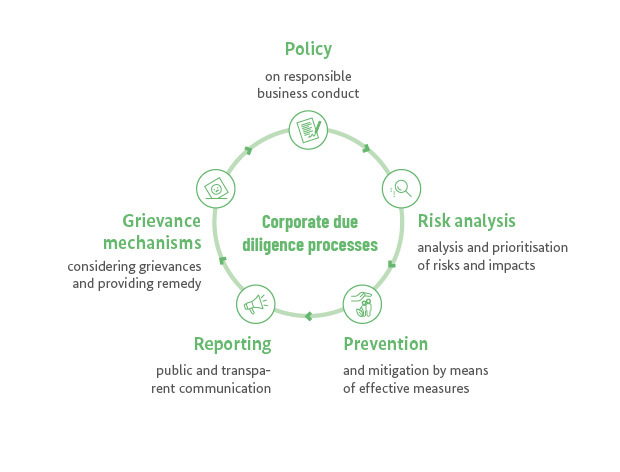
Requirements for due diligence processes
The basis of the Green Button’s requirements for corporate due diligence processes are the United Nations Guiding Principles on Business and Human Rights and the recommendations of the Organisation for Economic Co-operation and Development (OECD) for the textile sector.
The Green Button's requirements for due diligence processes are based on the five core elements listed.
Policy
Policy
The company publicly declares to take responsibility for its own business conduct along the value chain.
- Example: Code of Conduct on the website with a commitment to sustainable purchasing practices and the promotion of living wages.
Risk analysis
Risk analysis
The company identifies, assesses, and prioritises potential and actual impacts of its own actions on human rights and the environment in value chains.
- Example: A company sources cotton from India and identifies an increased risk of child labour.
Prevention and mitigation
Prevention and mitigation
The company takes effective measures to prevent the occurrence of identified risks and to end or minimise existing harm.
- Example: The company supports a supplier in Pakistan with training on the safe handling of chemicals.
Reporting
Reporting
The company communicates publicly and transparently about the process.
- Example: On the website, the sustainability report provides information on the main production countries and their risks, as well as on the measures the company takes to prevent or mitigate risks.
Grievance mechanisms
Grievance mechanisms
In order for affected rights holders and third parties along the value chain to be able to point out risks and claim violations of their rights, companies must promote access to effective grievance mechanisms.
- Example: Sewers can complain anonymously.
Most important changes to the Green Button 2.0
Here you will find the most important differences in the area of corporate due diligence between the 1.0 and 2.0 versions of the standard. These are presented under four key topics.
With the Green Button 1.0, workers' wages must be at least equal to the national minimum wage or industry standard (if higher) and paid in a timely manner. In order to build up long-term reserves for emergency situations and to feed their families, they need to be paid a living wage in the long term - what sounds so easy is a real challenge because many factors influence an appropriate wage level.
The Green Button 2.0 demands a commitment from senior management to work towards the payment of living wages. Companies must provide an analysis of the wage gap between wages paid and actual living wages in production facilities at the cutting and sewing stage. There must be a sound strategy for promoting higher wages in the supplier facilities that shows concrete steps to be taken. The surveillance audit two years after certification must show progress in implementing the strategy.
A central requirement for companies is the risk analysis. Companies must assess the adverse impacts of their own business activities on people and the environment in the textile supply chains. Knowing about risks and impacts is the first step and a prerequisite for fulfilling one's due diligence obligations. For the Green Button 1.0, the risk analysis must be prepared for two supply chain stages (sewing and cutting as well as bleaching and dyeing). For the Green Button 2.0, the analysis - analogous to the law - must extend to the entire textile supply chain, i.e. all the way to raw material extraction.
With the Green Button 2.0, companies must review their own incentive and reward system. The continuous implementation of due diligence must be included in the performance evaluation of at least one member of senior management. This does not apply to owner-managed companies.
The involvement of affected people on the ground is important and anchored in the Green Button requirements. To ensure that measures are appropriate, the Green Button 2.0 requires companies to involve affected stakeholders on the ground even more in developing, reviewing, and evaluating effectiveness - for example, in setting up anonymous grievance mechanisms that protect affected stakeholders from retaliation. Or in the steps companies take to provide remedy and take corrective action.
